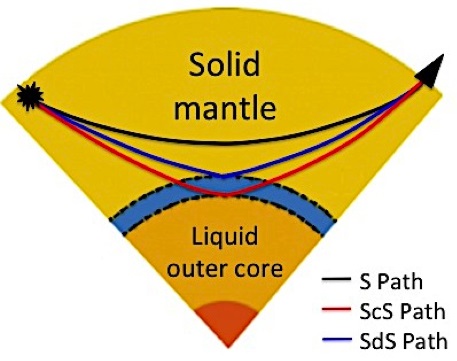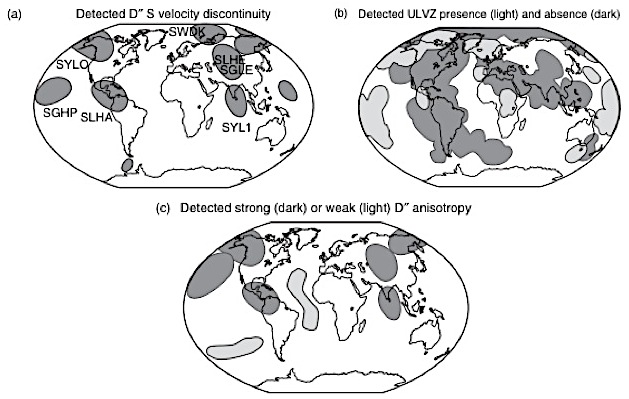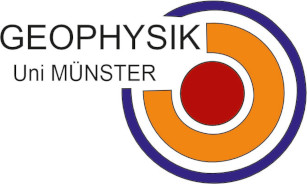Project : Global mapping of the D’’ seismic properties and mineralogy (HAADES)
The lowermost mantle of the Earth, the so-called D" region (the blue layer on Figure 1) corresponds to the lowermost few hundreds kilometers of the Earth’s mantle and marks the transition between the molten iron alloy outer core and the crystalline lower mantle such that heat, and possibly some material, are exchanged across the core-mantle-boundary (CMB). This layer thus plays a critical role in whole mantle convection processes but also in core convection, Earth's heat budget and geodynamo processes. That is why better characterizing the thermo-chemical behavior of the D" region would have great implications on our understanding of whole mantle dynamics and geomagnetism. However, as this region is difficult to reach, little information on its fine structure as well as its mineralogy is currently given in the literature.

The seismic studies of the D" region first revealed a velocity increase across the D" reflector which also displays large topography variations. However, more recently D" studies revealed a higher degree of heterogeneity and complexity: the existence of Ultra Low Velocity Zones (ULVZ) and the presence of seismic anisotropy. A summary of these observations is provided below in Figure 2.

These seismic properties were first proposed to be due to a mineral phase transition from bridgmanite (formerly perovskite) to post-perovskite because it takes place at similar depths than the D" region and it could also explain the anisotropy. However, other mineral transitions could also cause similar seismic structures.
So in order to better constrain D" structure we now need:
(1) a global pattern of the D" region seismic structures,
(2) to investigate simultaneously different seismic parameters (anisotropy, attenuation, topography and velocity) and
(3) to compare with possible mineral candidates.
These three points are the aims of the project HAADES (Heterogeneities, Anisotropy and Attenuation in the Deep Earth through Seismic waveform studies), a three year project funded by DFG.
In order to do so, we plan to use core reflected waves (e.g., ScS, PcP, red path on Figure 1) and reflected waves from the top of the D" layer (SdS, PdP, blue path on Figure 1). Then by doing differential measurements between these two waves we can get rid of the effect of the mantle above the D" layer and thus any anomaly can be assumed to reflect D" heterogeneities. We will perform differential travel time, anisotropy and attenuation measurements on a global dataset so that we will get a global map of the D" seismic structure. This will finally be used to look for good mineral candidates that could explain these observed seismic properties.
Internship opportunities:
If you are a bachelor or a master student, if you want to learn more about seismology and if you want to experience the life in Münster there are possibilities for us to propose internships on this topic. For this please contact either Dr. Stephanie Durand (durand@uni-muenster.de) or Prof. Christine Thomas (tine@earth.uni-muenster.de).
Further reading :
Cobden L, Thomas C. 2013. The origin of D" reflections: a systematic study of seismic array datasets. Geophys. J. Int. 194, 1091-1118.
Garnero EJ, Revenaugh JS, Williams Q, Lay T, Kellogg LH. 1998. Ultralow velocity zone at the core-mantle boundary. In Core-Mantle Boundary Region, ed. M Gurnis, ME Wyssession, E Knittle, BA Buffett, pp. 319-334. Washington, DC: AGU
Lay T. 2007. Deep Earth Structure – Lower Mantle and D". In Treatise on Geophysics, Seismology and structure of the Earth, ed. B Romanowicz, A Dziewonski, G Schubert, pp. 634.

